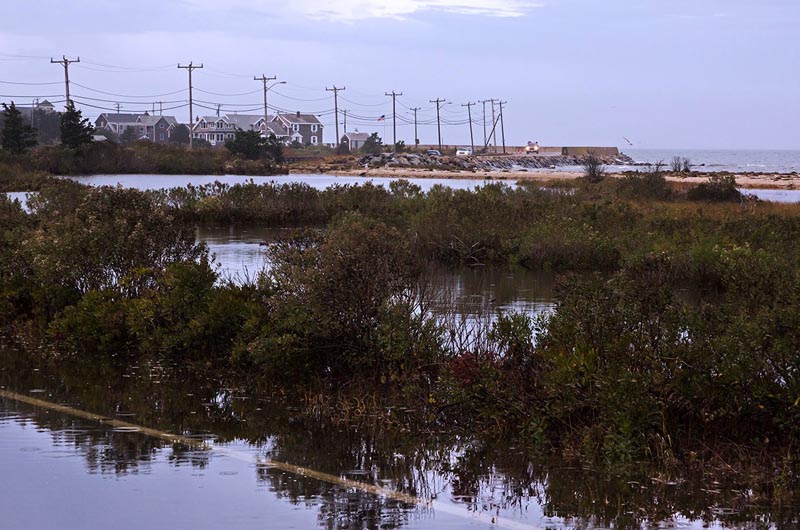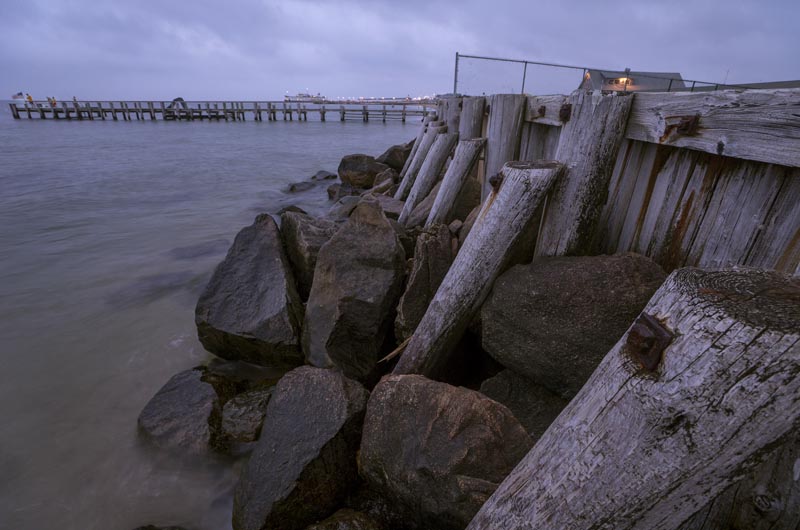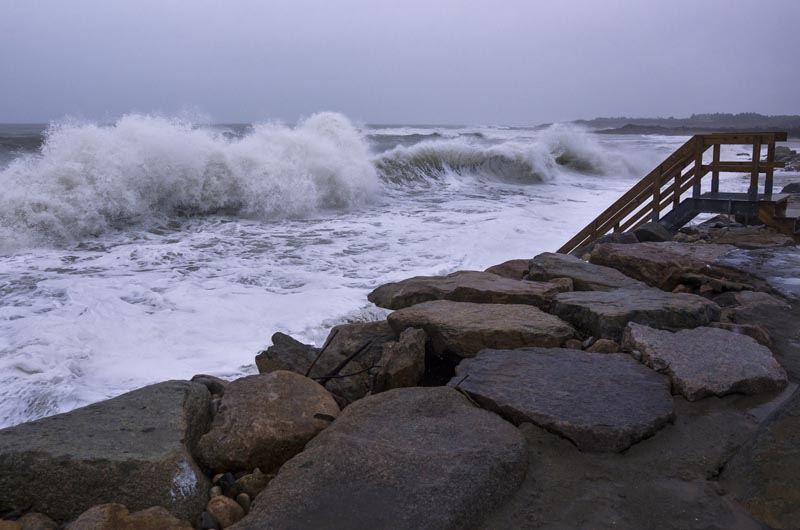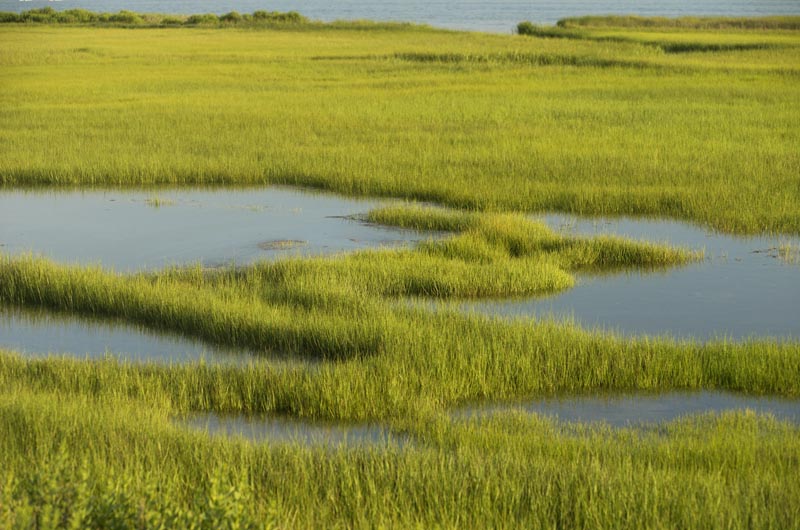Planning for the Future

Planing for retreat from an eroding coastline is expensive, it represents loss of the most elemental and permanent kind and nobody wants to think about it, even after it’s too late to do anything else.
But on the Vineyard and across Cape Cod, coastal scientists and engineers say the time to plan has arrived.
Property owners all around the Vineyard are beginning to sense that no matter what sort of seawall they build or repair in front of a bluff, or how much sand they lay down to nourish a beach, they cannot finally stop the loss of land between them and the rising sea.
And towns are grappling with the fact that they can no longer count on the tens of millions of dollars it would take to shore up a road when the bank below it faults and slides too much to fix. Or save a parking lot after the Atlantic begins to break it up and carry it off in chunks.
For these landowners and villages, experts say the time has come to identify the places they will back up to if they can, find the money to pay for it where they might and actually move before the things they care about are lost.

“Let’s try to hold the line.” That’s the usual reaction of most homeowners contending with the erosion, said Leslie Fields of the Woods Hole Group, a consulting firm based in Falmouth. The reaction is natural, she said. “They’ve purchased something in the recent past or inherited something from their family and they want to try to keep it.”
Ted Keon, who has served as coastal resources director for the town of Chatham for the past 15 years, agreed. In Chatham, more than 20 houses have been lost to the sea or taken down since 1995 due to erosion and coastal storms. He often deals with homeowners — some of whom have lived along the Chatham shoreline for 30 years — who cannot believe that the sea is now threatening the homes they’ve enjoyed for so long. “Thirty years is a long time for them,” he said. “It’s a blink in the processes that are ongoing here.”
He recounted a recent conversation with a landowner who, exasperated after Mr. Keon tried to explain the broader context, asked: “So Cape Cod is going to go away, and that’s okay?”
Mr. Keon sympathized with the incredulity: “Like, you’re letting it just go away — how can we as humans let Cape Cod go away? Isn’t it almost our responsibility to do something to hold it?” he said. “But do you understand to hold Cape Cod — what that means [in terms of costs]? Even if it were physically possible?”
Ms. Fields said with the loss of homes on Plum Island this winter, and the gargantuan effort to move the Richard and Jennifer Schifter home just 275 feet inland from an eroding embankment on Chappaquiddick earlier this year, the outlook of some buyers along the shoreline is beginning to change.
“We have had a number of phone calls and inquiries and new jobs from clients on the Vineyard who want to be responsible in planning for their future projects,” she said. The discussion sometimes turns on the longevity, movability and environmental impact of a new home — what are its prospects over the next generation or two or three?
“So if they’re working with an architect, let’s say, and the architect’s saying, ‘Well, what kind of house are going to build here? Are we going to build one for you and your wife and your kids? Are we going to build one for your grandkids? Are we going to build one for your great-grandkids?’” Ms. Fields said. “I think that’s good. I like that.”
For towns, however, it can be almost impossible to think about abandoning a road, moving a parking lot or building new causeways or bypasses before these things are lost. Steve Ewing of Aquamarine Dock Builders of Edgartown, who has built piers and armored private properties against erosion all around the Island since 1978, has also served on town committees that have attempted to look ahead as the ocean rises.

These committees work hard and try to think imaginatively about the future, but he conceded the obstacles before them: There are more immediate problems to worry about, the groups are sometimes staffed by volunteers, often meet at the end of the day “and everybody wants to get home at night,” Mr. Ewing said.
He framed the problem in blunt, simple terms: “We live on a big sandbar, which has a few roots and rocks in it, holding it together. Everything that’s high up – elevated – the wind and the waves want to make low. That’s just some of the rules here.”
But Vineyarders long ago began to build structures to protect things they care about along the waterfront — harbors, oceanside parks, roads — and Mr. Ewing said he believes passionately that the Island should keep those commitments for as long as it can.
And he bats away any thought to address the problems of erosion town by town. Establish an all-Island committee, he said. Inventory every jetty, groin and seawall ever built around the Vineyard to hold the shoreline in place. Collect data on how well these structures are working today. Create a computer program that forecasts what might happen as you add, modify or even remove each of those structures.
“Then you can see, scientifically, where the Island’s been and where it’s going,” Mr. Ewing said. “It’s not rocket science, really — it’s a bunch of sand moving in water, being driven by wind and waves. I see it as a pilot program and a model for coastal communities. People are doing this all over — you know that — but often people are just putting out fires. There’s not a lot of proactive planning.”
Steve McKenna, the Cape and Islands regional coordinator for the state agency known as Coastal Zone Management, said planning should try to take a look ahead: towns might try to persuade voters to buy a nearby parking lot, for example, before an existing one is lost to the ocean. “Get people [used to] the idea that we do have to take some steps, and [have] people at town meeting raising their hands for moneys for these types of things,” he said.
But Greg Berman, a coastal processes specialist at the Woods Hole Sea Grant and Cape Cod Cooperative Extension, doubts this will ever happen. “I keep thinking of sewering and watering on the Cape,” he said. “Anything that adds a penny to your tax bill gets destroyed.” Mr. Berman said he believes it is up to the town officials to identify where roads and lots might move before a storm carries off the old ones and be ready to enact a plan after the storm occurs.
“After an event is the time to do things. Before the event it’s time to plan,” he said. “So you need something in place to say, ‘Okay, you’ve gotten destroyed. We thought you would be, so now you have to do this.’ It’s a hard sell.”

As an outpost on the Atlantic, the Vineyard is especially vulnerable to erosion, but visionary steps taken long ago will make planning a retreat from vulnerable parts of the shoreline somewhat easier, said Jo-Ann Taylor, the coastal planner for the Martha’s Vineyard Commission. “We’ve had the coastal districts since the 1970s,” she said, referring to the Islandwide districts of critical planning concern, special overlay planning districts with extra regulations for environmental protection. Those heavily regulated districts have kept hotels, condominiums, malls, and sometimes waterfront homes away from the Island’s most vulnerable coastlines.
“From what the early commissioners did, we’re a little bit ahead of the game in that respect,” Ms. Taylor said. “Some of the places that are losing houses — Plum Island — all of those developed areas, those developed barrier beaches, we don’t have that. Our barrier beach woes are more like, well, we have this road that we count on, we have that road that we count on, commercial development that’s vulnerable in Vineyard Haven.”
She wants to organize meetings with selectmen, town highway departments, conservation commissions and citizens to discuss where and how to begin to back away from an eroding coastline.
When it comes to roads, she said: “I guess what it comes down to is, What are the ones that we really want to try to save? Because they’re not going to survive as roadways. When are we going to abandon that route and start looking at higher ground? And then when we look at the higher ground, we don’t want to claim any area where there’s a wetland. . . . We need to leave room for that wetland to retreat as well.”
Piers, beaches, bridges and waterfront business districts are also on the list of immediate concerns.
“It’s very, very complicated,” Ms. Taylor said. “And I think it’s going to become very emotional as well . . . But I don’t think there are too many who deny that something serious is going on here.”